|
|
Post by 1dave on Mar 20, 2022 15:29:39 GMT -5
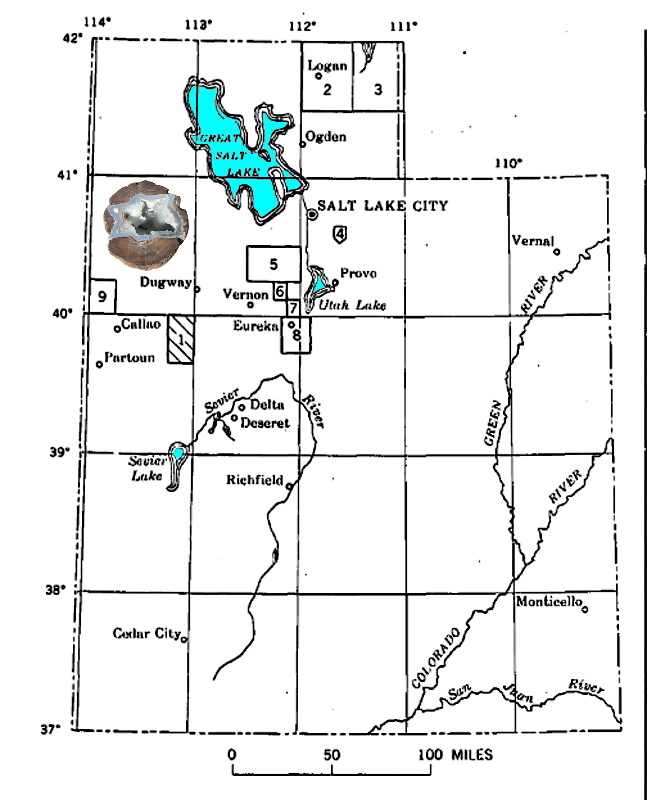 I must begin with an apology.  I know some of you don't like big pictures on your tiny phones. but for me,  what good is a picture if it isn't big enough to see? Sometimes it takes me a long time to pay attention. Back in the 1970's when I collected this Dugway group, I "knew" what it would look like when I cut it open. 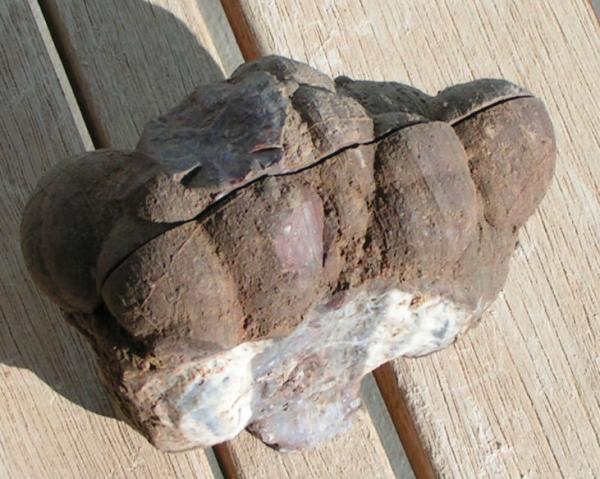 Obviously a row of thundereggs, right? 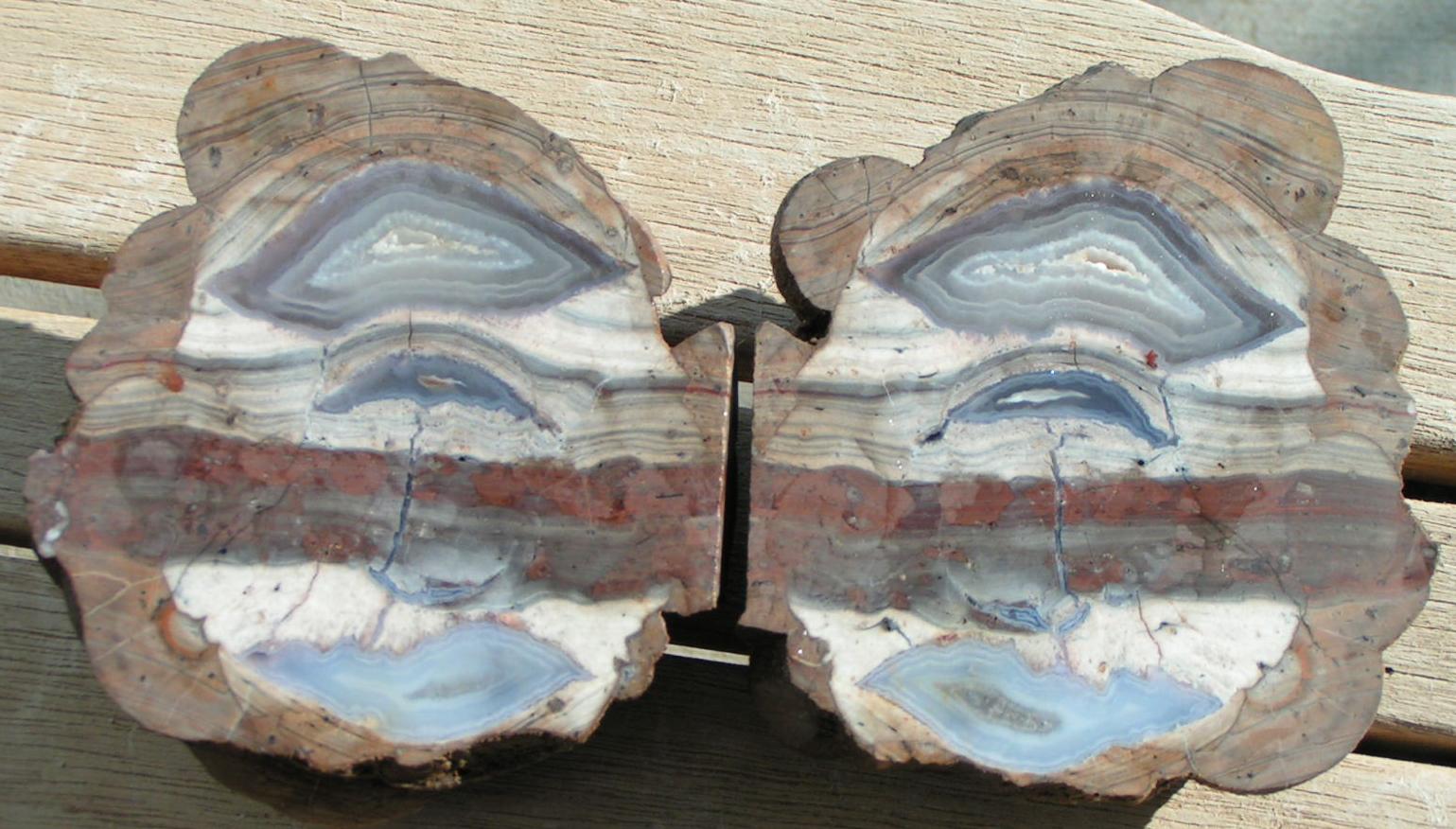 What? A stack instead? How odd. Out of mind.  |
|
|
|
Post by 1dave on Mar 20, 2022 15:30:33 GMT -5
Today I was going thru my collection when something started dawning for the first time. 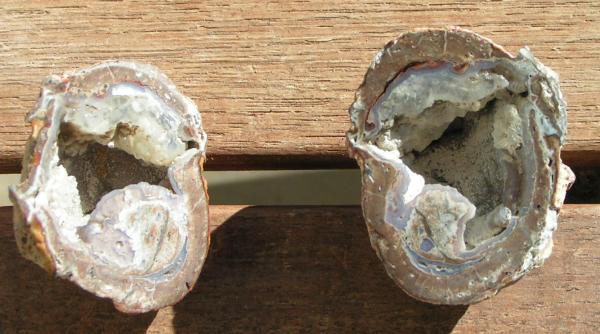 Dugways have weird shapes. No long fiber imprints. No dimple, no pimple. 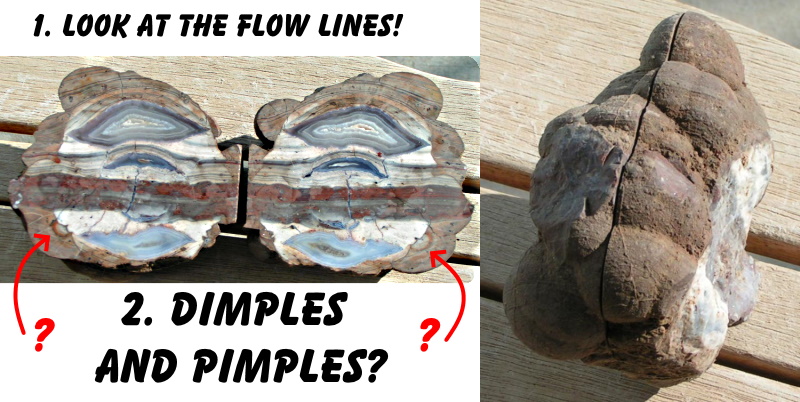 I had never really paid attention to the flow lines before. Layers from top to bottom, AND layers from left to right! Cross Currents? This one seems to have begun as a spherulite, but look at the layers! 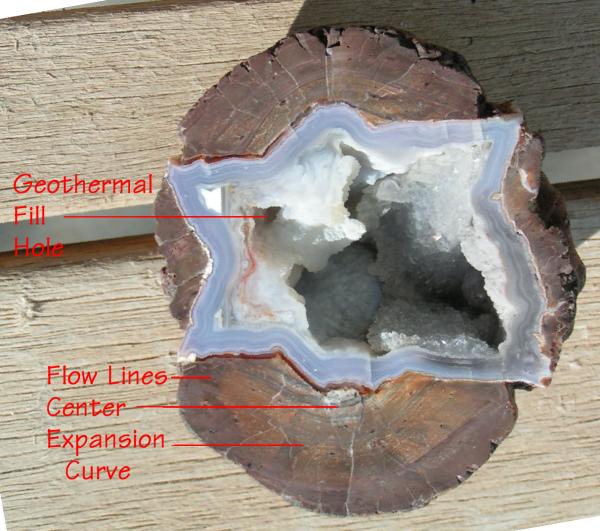 But this one, my arrowhead? Look at all the narrow water bands scattered here and there. In a collision the right side flow lines and structure seems to have doubled back on itself! 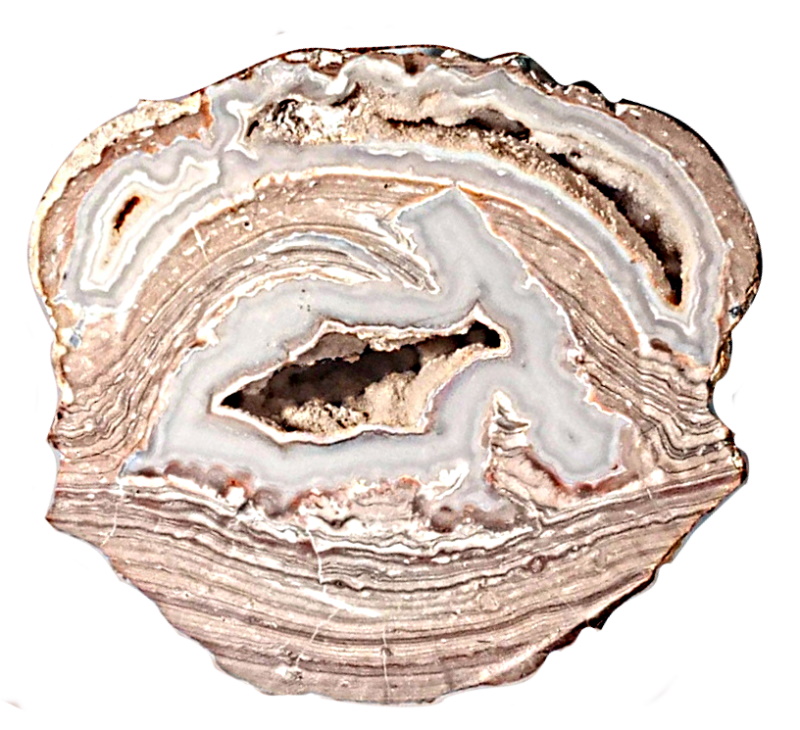 Thundereggs begin as crystobalite needles. Much of the Dugways appear to be hot water drops trapped between layers of rhyolite that just expanded here and there between layers.  WHAT DO YOU THINK? |
|
|
|
Post by stardiamond on Mar 20, 2022 16:15:33 GMT -5
I bought a small piece of 'thunderegg' rough at fullmoon on facebook. I buy anything that looks interesting and made two cabs.  I listed the one on the left on Etsy as a thunderegg cab and quickly a message that it was a Dugway. I did a search on Dugway and nothing I saw looked exactly like what I bought but I was given the correct id. |
|
|
|
Post by 1dave on Mar 20, 2022 16:46:19 GMT -5
I bought a small piece of 'thunderegg' rough at fullmoon on facebook. I buy anything that looks interesting and made two cabs. I listed the one on the left on Etsy as a thunderegg cab and quickly a message that it was a Dugway. I did a search on Dugway and nothing I saw looked exactly like what I bought but I was given the correct id. Yes, they are both rhyolite geodes formed by water expanding into steam, but . . . |
|
|
|
Post by 1dave on Mar 21, 2022 15:22:13 GMT -5
pubs.usgs.gov/pp/0415/report.pdfThe Answer is YES! 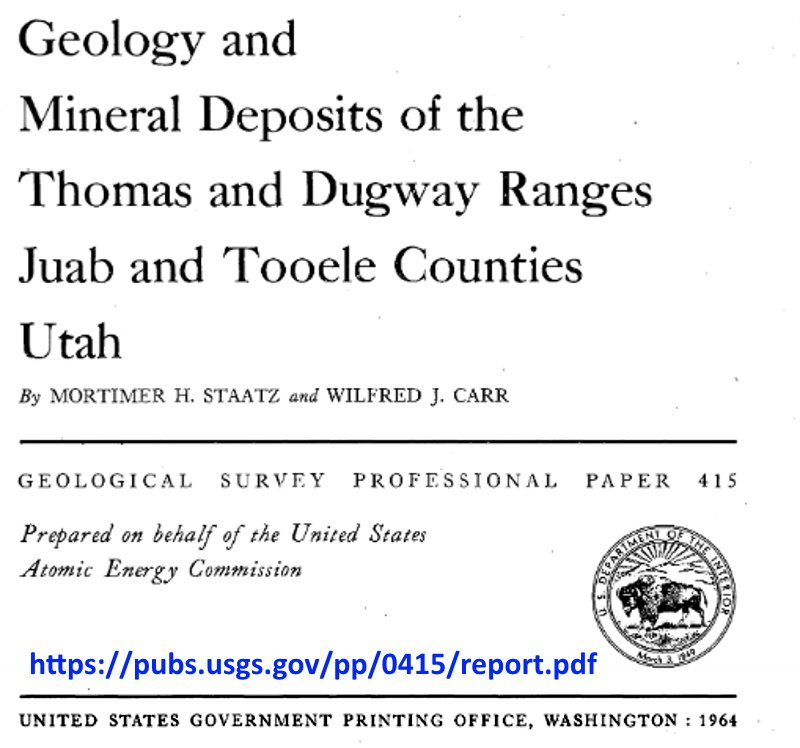  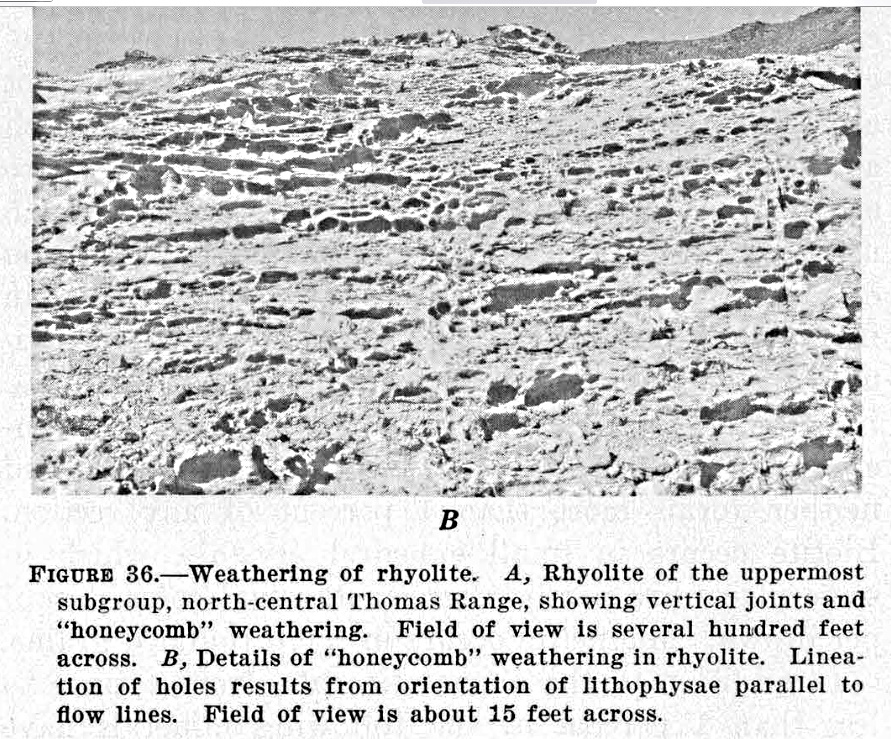 94 GEOLOGY AND MINERAL DEPOSITS, THOMAS AND DUGWAY RANGES, UTAH Lithology.- The rhyolite varies from place to place in color, texture, abundance of phenocrysts, degree of layering, and presence or absence of spherulites. The variations are gradational, and there may be as many differences between parts of a single flow as between two separate flows; it is rarely possible to determine, by inspection or even by microscopic study, what flow a given specimen of rhyolite came from. Two rhyolite flows in the northwestern part of the Thomas Range, however, can be distinguished in places by the presence of copper-colored biotite flakes in the older flow. The rhyolite is divisible into three facies: obsidian, red spherulitic rhyolite, and gray rhyolite. A thin layer of obsidian, formed by rapid cooling, is generally formed at the base of a thick flow of rhyolite (fig. 28). 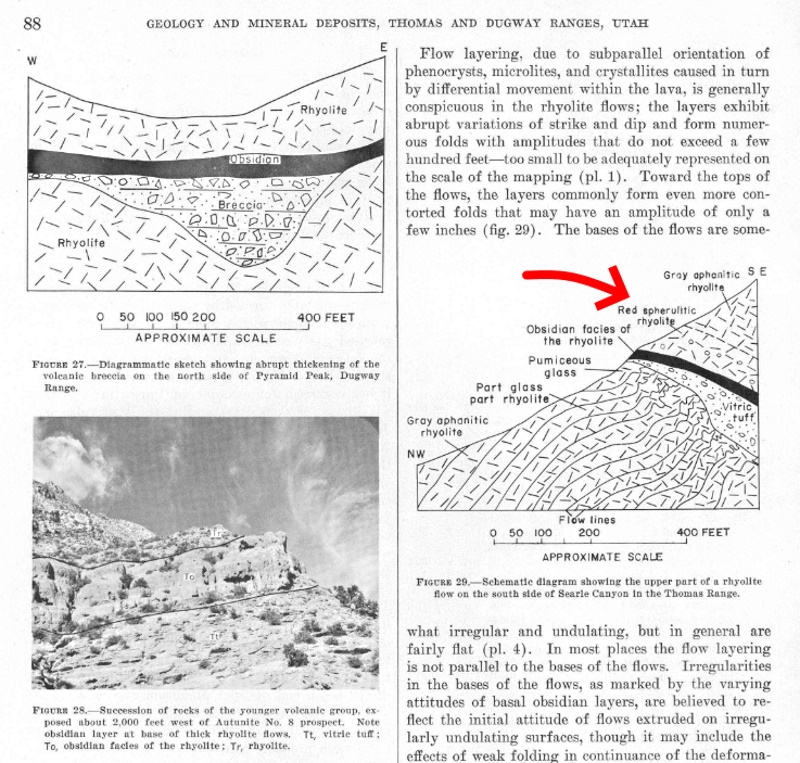 Obsidian has also been found within or beneath layers of volcanic breccia in the northwestern part of the Thomas Range and about a mile northwest of the north end of Antelope Ridge. Discontinuous layers of obsidian occur, also, within other bodies of rhyolitic lava south of Dugway Pass, where they probably mark chilled surfaces of flows. The red spherulitic rhyolite is almost always found just above the obsidian near the base of a flow, but in a few places, notably in the northeastern part of the Thomas Range, it occurs considerably above the base. Whether in these places the red layers mark pauses in the outpouring of the lava is not known. Red spherulitic rhyolite resting on obsidian forms extremely irregular layers, which may vary laterally in thickness from less than an inch to 200 feet within a distance of 600 or 700 feet. The spherulitic rhyolite was found in all the subgroups except the lowest, in which only the top of the flow is exposed. The red rhyolite usually grades into gray rhyolite, through rock consisting of red spherulites in a gray matrix, but in ·some places the contact between the two facies is fairly sharp. The gray rhyolite makes up about 95 percent of all the rhyolite in the younger volcanic group. Because the obsidian facies has sharp boundaries and is useful in distinguishing main subgroups from one another where pyroclastics are absent, it was mapped separately, but the gray and red rhyolites are represented by a single color symbol.
|
|
RWA3006
Cave Dweller 
Member since March 2009
Posts: 4,633 
|
Post by RWA3006 on Mar 21, 2022 19:01:04 GMT -5
|
|
RWA3006
Cave Dweller 
Member since March 2009
Posts: 4,633 
|
Post by RWA3006 on Mar 21, 2022 19:01:40 GMT -5
|
|
|
|
Post by 1dave on Mar 21, 2022 23:07:07 GMT -5
Randy - what is going on in the lower right hand corner of this Collision Pair? 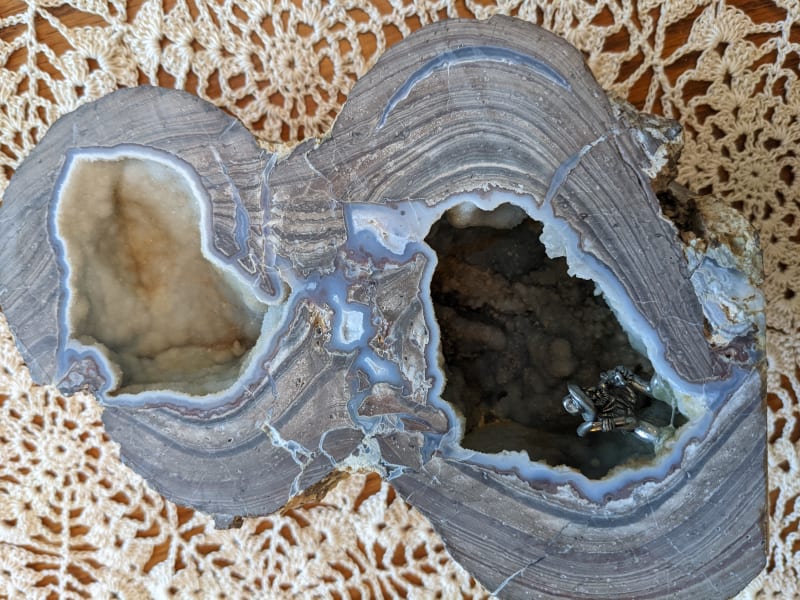 |
|
RWA3006
Cave Dweller 
Member since March 2009
Posts: 4,633 
|
Post by RWA3006 on Mar 22, 2022 9:00:40 GMT -5
This one stands upon the flat on the right and my mother in law couldn't resist placing a little miner in the grotto.
|
|
|
|
Post by 1dave on Mar 22, 2022 12:31:42 GMT -5
"  " has to come from far away, and I am guilty of disdaining the Dugways. That ends NOW! I learned a LOT about Thundereggs yesterday. They require a lot of iron atoms to nucleate into spherulites. No Iron and a lot of silica - no thundereggs. In the Thomas Range Obsidian - Rhyolite eruption 6-8 million years ago (was that part of the Yellowstone Track?) 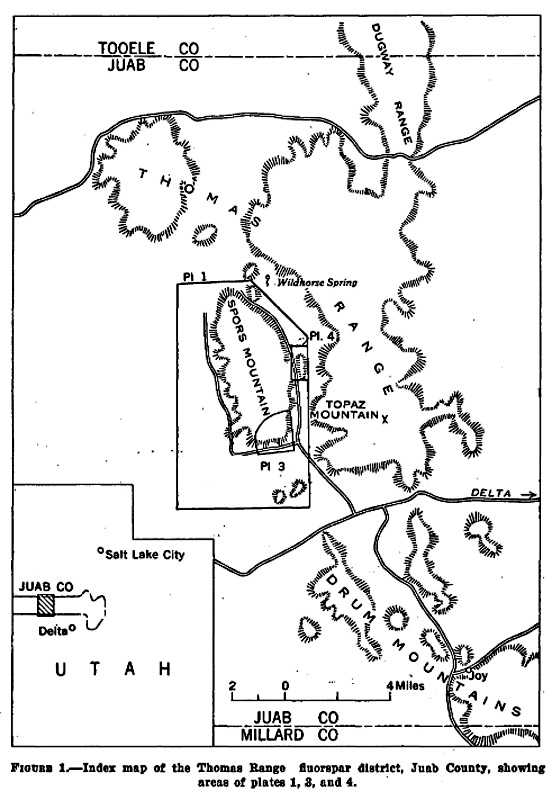 the lithophysae appeared only in the upper black obsidian and red rhyolite. For the most part, Dugway spherulites are quite small, but the water component is large. This example Randy sent is informative. The bottom portion expanded about 30 ~ 40% . . . What happened next? Nearby expansions allowed another layer to expand a little, THEN BOOM! the main cavity blew open? 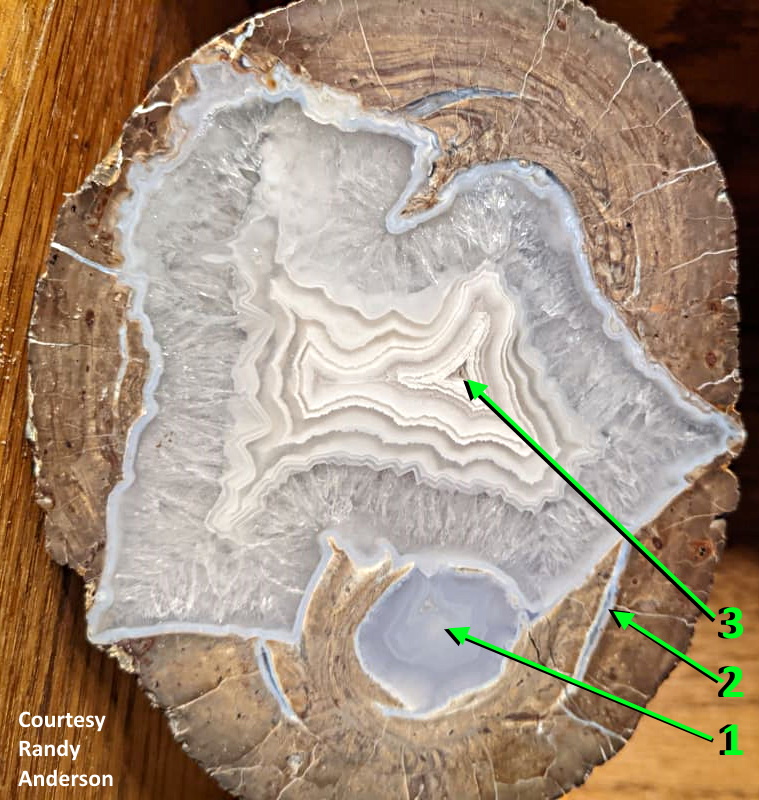 (Thanks for sharing Randy, THIS has to go in my book! |
|
|
|
Post by 1dave on Mar 23, 2022 11:34:12 GMT -5
RWA3006 This is the way it is going in the book, posted here for your records. Utah’s Dugway Geodes are different from most lithophysae in that the central spherulites are often nearly microscopic, and the surrounding layers are of quartz and partial tridymite sheaves. 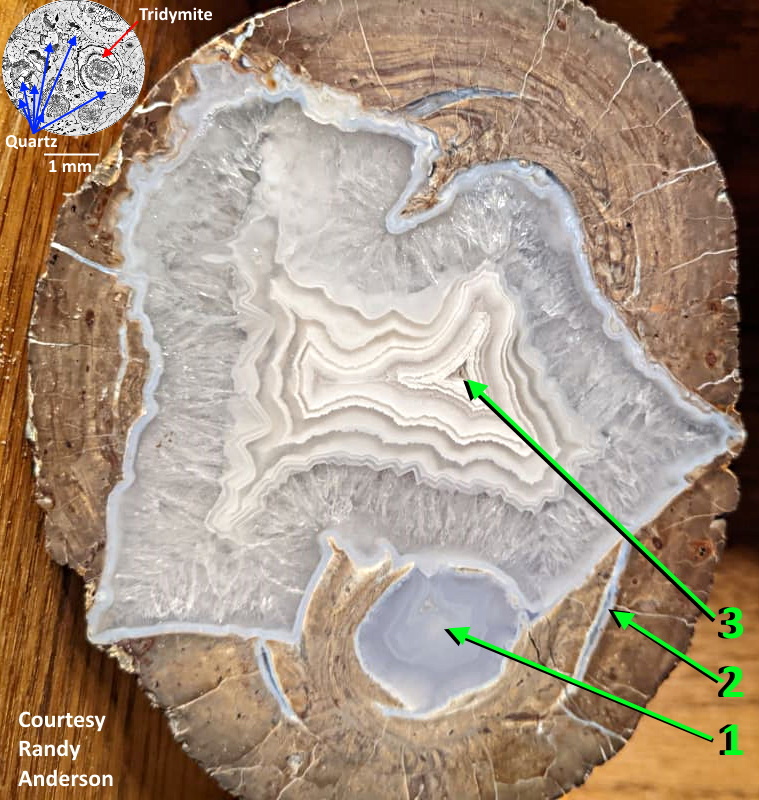 Almost like blowing up a balloon, this specimen from Dugway Utah preserved 3 stages of expansion. Above, 1. the moisture in the center began expanding, 2. Moisture in a layer halfway out barely began to expand, when 3. The area just above the center exploded as much as space would allow.
|
|
RWA3006
Cave Dweller 
Member since March 2009
Posts: 4,633 
|
Post by RWA3006 on Mar 23, 2022 12:48:18 GMT -5
Can't wait to see the finished project!
|
|
|
|
Post by 1dave on Mar 24, 2022 1:39:49 GMT -5
|
|
|
|
Post by 1dave on Mar 25, 2022 18:28:17 GMT -5
I was going thru the Geode Kid's CD again today and was startled by how close one of his collision specimens is to one of mine. 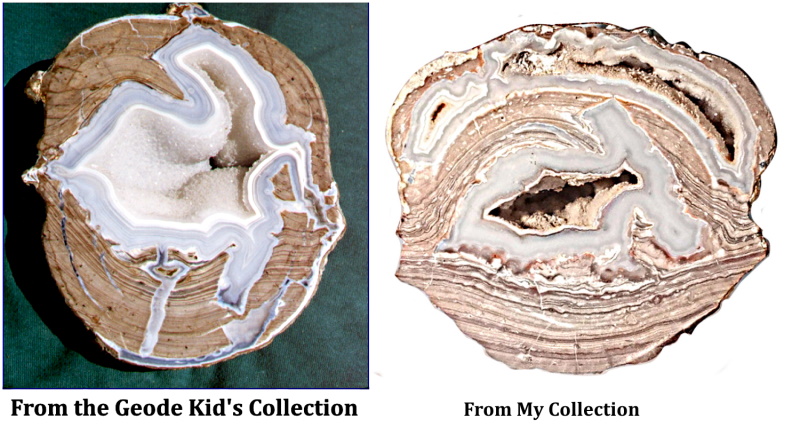 |
|


 I know some of you don't like big pictures on your tiny phones.
I know some of you don't like big pictures on your tiny phones. what good is a picture if it isn't big enough to see?
what good is a picture if it isn't big enough to see?

















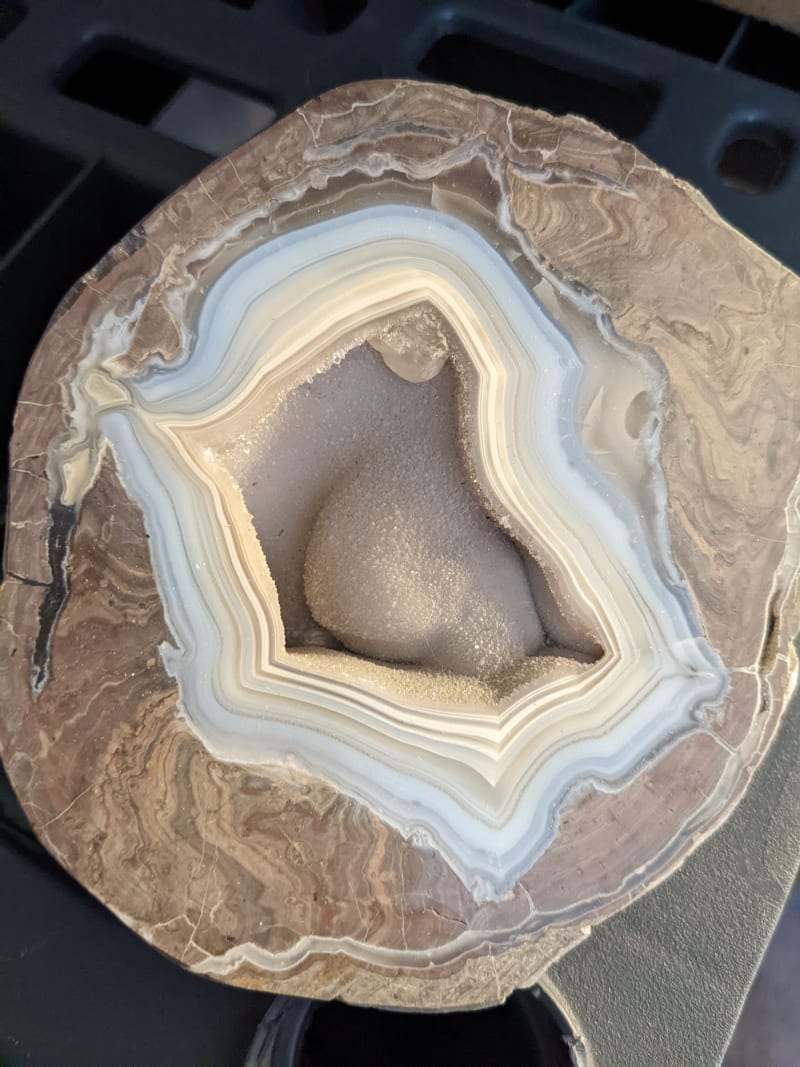
 " has to come from far away,
" has to come from far away, 
















